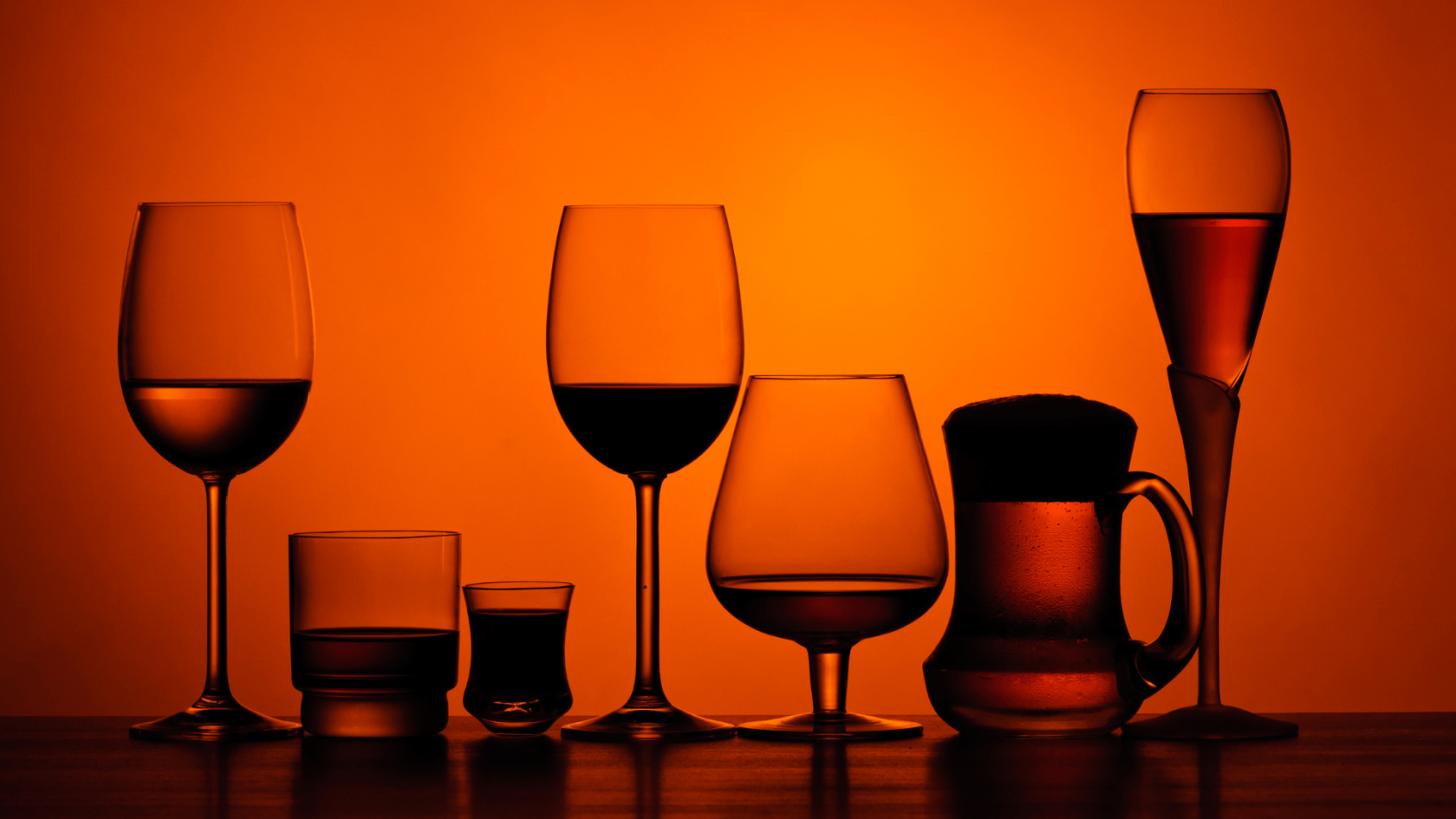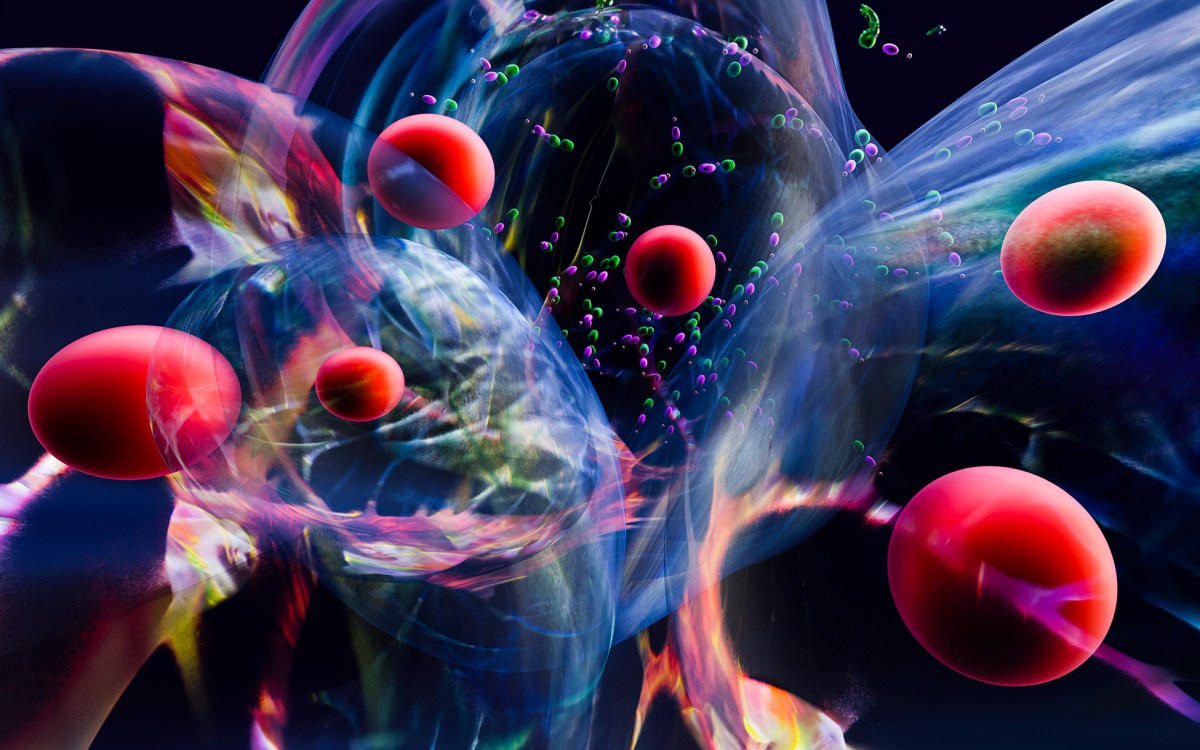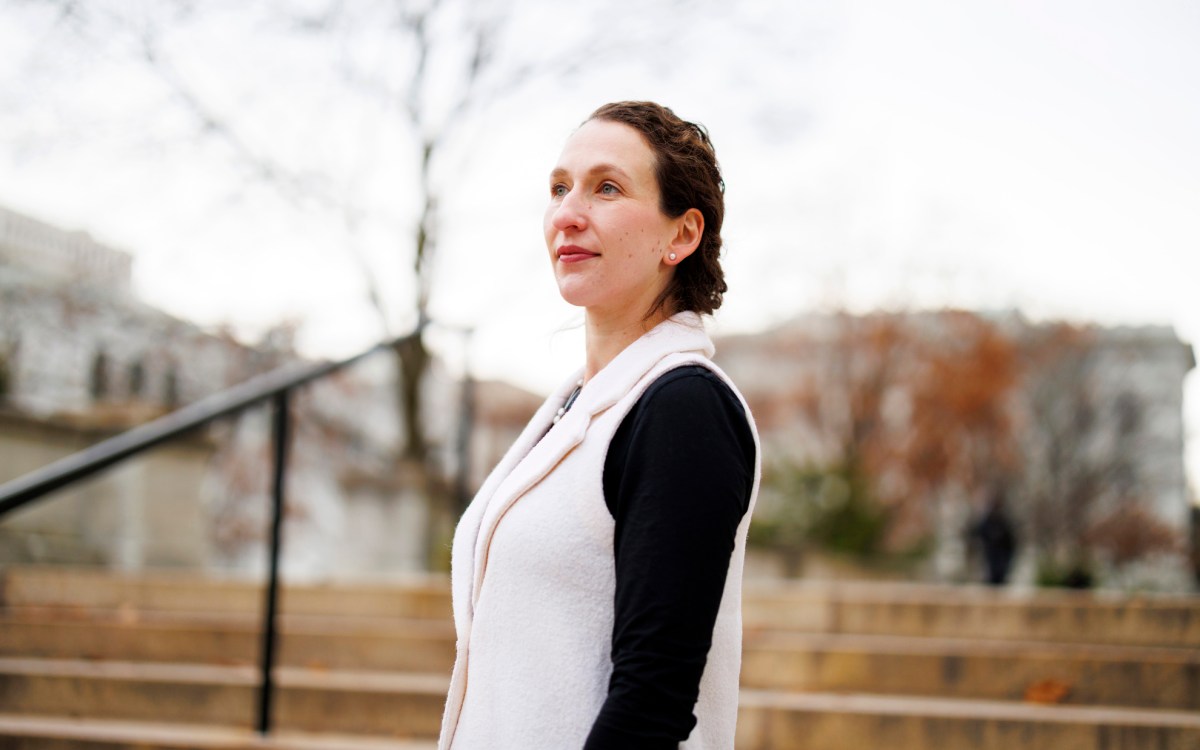‘Dry January’ helped drive drinking rates to 96-year low

Health experts say rise of sober-curious movement, shifts in tech, meds likely made difference in wake of pandemic excess
Are shifts in drinking culture, wearable technology, and drug research combining to help cut alcohol consumption to levels not seen since the 1930s?
Harvard health experts think they might be.
A recent survey showed that a record low of 54 percent of U.S. adults say they drink, the lowest seen since the Gallup Poll’s initial 1939 look at the nation’s imbibing habits. The reading is the latest in a multiyear trend, which has seen a decline from 67 percent in 2022 to 62 percent in 2023, 58 percent in 2024, to today’s 54 percent.
The poll also suggests that those who do drink are drinking less, with a record low of 24 percent reporting having had an alcoholic beverage in the last 24 hours.
“The messages are landing,” said Marisa Silveri, an associate professor of psychiatry at Harvard Medical School and director of McLean Hospital’s Neurodevelopmental Laboratory on Addictions and Mental Health. “We’re seeing measurable shifts in drinking behavior and awareness that reflect decades of neuroscience and public health research finally translating into real-world impact.”
During the pandemic, the outlook was less positive. A significant spike in drinking caused alarm among public health officials and researchers, who saw a reversal of hard-won gains and predicted long-term harms and a spike in alcohol-related deaths — due to cancer, liver failure, and other alcohol-related ills — in the years ahead.
Silveri gives the so-called sober-curious movement a lot of credit for ushering in change. The message of re-evaluating one’s relationship with alcohol gained steam after the pandemic, spread widely through social media, and seemed to touch a collective nerve. Breaks from drinking in “Dry January” — New Year’s resolution season — or autumn’s “Sober October” went mainstream.
Silveri, like many Americans, became more aware of how drinking habits changed during the pandemic. Extending a Dry January into 500 days, she saw firsthand the sleep and mood improvements that mirror what neuroscience has long demonstrated about alcohol’s impact on brain health.
The increasing sophistication and popularity of wearable technology also may have played a part, Silveri said. Fitness trackers not only record a person’s steps during the day but also highlight the physiological effects of a night’s drinking, chronicling elevated heart rate, blood pressure, and sleep disruptions — changes that can result in mood, cognitive, and mental health impacts.
Recent scientific findings that no amount of alcohol is healthy arrived amid the shifting social environment on drinking, potentially lending those cautions greater resonance, Silveri said.
Those results also called into question the once-accepted wisdom that light to moderate drinking isn’t harmful and that some drinking — a glass of red wine per day — may actually be healthful.
“Alcohol challenges our physiology, there’s no disputing that,” Silveri said. “And there’s not really any evidence that it changes physiology in a beneficial way.”

Marisa Silveri (left), Joji Suzuki, Guongyi Szabo, and Jagpreet Chhatwal.
Stephanie Mitchell/Harvard Staff Photographer, Veasey Conway/Harvard Staff Photographer, Niles Singer/Harvard Staff Photographer
That stance echoes the January warning by the U.S. surgeon general that alcohol is the nation’s third-leading preventable cause of cancer, after smoking and obesity.
Drinking, the advisory said, has a causal link to seven different cancers: breast, colorectal, esophagus, liver, mouth, throat, and voice box. Drinking more increases risk, the advisory says, though for three cancers — breast, mouth, and throat — the risk rises with as little as one drink per day.
“The message that’s finally resonating is that is if you have an alcohol use disorder or have problematic alcohol use, any reduction in use is an improvement. It’s not all or nothing,” Silveri said. “For some, abstinence remains essential, but for many people who drink at hazardous levels, even modest reductions can yield measurable benefits — better sleep, improved mood, sharper cognition. These small physiological and psychological gains reinforce each other, supporting longer-term change.”
While the negative health effects of alcohol have gained public prominence recently, some researchers caution against discarding all past evidence of beneficial effects.
There’s no argument that heavy drinking is harmful, but the question — and the evidence — concerning low and moderate drinking is more complex and requires more high quality studies, they say. Increased risk for some cancers may be counterbalanced by lower risk of others, for example.
Moderate drinking seems to decrease the risk of cardiovascular disease versus nondrinkers. Drinking patterns are also important, with one large study showing that moderate drinking with meals appeared to decrease mortality, while consuming the same weekly amount outside of meals and on fewer occasions increases mortality.
Joji Suzuki, associate professor of psychiatry at Harvard Medical School and director of Brigham and Women’s Hospital’s Division of Addiction Psychiatry, said the sober-curious movement has been reinforced by the development of appealing non-alcoholic alternatives, such as mocktails and a new generation of nonalcoholic beer and wine, that reduce stigma and make bars, parties, and nightclubs more welcoming.
While the increased interest in sobriety is important, Suzuki said many people will continue to drink, so it’s also important not to lose the message of moderation.
“If you’re not drinking, don’t start drinking because you think you’re going to get a benefit,” Suzuki said. “But we know that people are going to drink, so keep it moderate. Moderation is a very important message.”
“Moderation is a very important message.”
Joji Suzuki
Another shift in recent years, Suzuki said, has been the startling effectiveness of the latest generation of anti-obesity medications in helping curb drinking.
These Ozempic successors are GLP-1 inhibitors and have been widely prescribed in just a few years. They’ve proven remarkably effective at removing the desire to overeat and have allowed people to drop significant weight.
But they also reduce the thirst for alcohol, Suzuki said, to the extent that trials are being considered to test GLP-1 medication for treatment of alcohol use disorder.
If successful, the drugs would represent a powerful new optionto the current major treatment alternatives, like naltrexone, which have not proven very effective.
“People who are not even trying to cut back on drinking are saying, ‘After starting those medications, I notice that I’m not drinking much — or at all,’” Suzuki said. “There are a number of companies that are now specifically targeting alcohol use disorder with GLP-1s, with the aim of making them an FDA-approved treatment.”
Gyongyi Szabo, expert on liver inflammation, HMS professor of medicine, and chief academic officer at Beth Israel Deaconess Medical Center, sees a generational shift in the data, and in her own home.
The recent Gallup poll found that young adult drinking rates have been falling for a decade and since 2023 dropped from 59 percent to 50 percent.
Szabo’s 30-year-old son recently said he’d become a vegetarian, something she attributes to a greater appreciation among the current generation of young adults of the health and social consequences of choices made in eating and drinking.
“There is a generational shift that may be beneficial,” Szabo said.
Szabo said the excess consumption during the pandemic’s difficult months may have caused “an awakening” among those light or moderate drinkers who became worried about what was happening. The downstream effects of that awakening — and the reaction that caused — may still be becoming apparent.
“The increased alcohol use during the lockdown was really bad for everyone,” Szabo said. “But maybe the news actually travels, and people change their behavior. If this is true, it is very, very good. It’s going to have a multiplier effect from the standpoint of liver disease, because, in combination with alcohol, other conditions like medical obesity and Type 2 diabetes have a synergistic effect on the liver.”
During the pandemic, Silveri said, there were concerns that parents stuck at home might allow or even encourage teenagers to drink with them, reasoning that it was safer for them to do so in a controlled environment.
But the pandemic may have had a beneficial effect as well.
School shutdowns disrupted the high school social scene that commonly involves illicit drinking, and research has shown that the later youth begin drinking, the lower the chances that they’ll become problem drinkers down the road.
Even a year or two delay in the age of initiation of youth drinking can reduce physiological impacts on the adolescent brain, with potentially positive ripple effects.
“For anyone under the age of 21 there are not only no benefits to drinking, but clear harms,” Silveri said. “Alcohol interferes with brain development, amplifies risk-taking and emotional reactivity, and raises vulnerability to addiction. Delaying the onset of first use remains one of the most effective ways to protect against later addiction. I stand by that strongly because it is supported by some of our best epidemiological data.”
Despite the positive trends, experts said alcohol’s negative societal impacts are far from finished.
Jagpreet Chhatwal, associate professor of radiology at Harvard Medical School and director of Massachusetts General Hospital’s Institute for Technology Assessment, said the recent polling provided a broad view but didn’t focus on problem drinking, which doesn’t appear to have subsided.
Liver failure, Chhatwal said, is caused by years of heavy drinking, and any change in those drinking habits won’t be reflected in clinic waiting rooms for some time.
“Binge drinking, high-risk drinking, those things were not covered in the survey, and it will be important that we see those trends also coming down,” said Chhatwal, who leads health policy research in several areas, including alcohol use disorder, liver cancer, and nonalcoholic fatty liver disease. “It’s too soon to say that this small drop in consumption will have an impact because it takes years to see that trend in liver disease.”
There are other pockets of concern as well, Suzuki said.
People with alcohol-related issues are over-represented in the nation’s emergency rooms, while high school drinking remains an issue. Women continue to narrow the gap with men when it comes to problem drinking, with the result that alcoholic liver disease is increasing among women.
“It’s not all good news,” Suzuki said. “There are some troubling trends that are emerging, but overall I think it’s great that there’s a greater interest in sobriety and recognition that heavy drinking can be harmful.”





